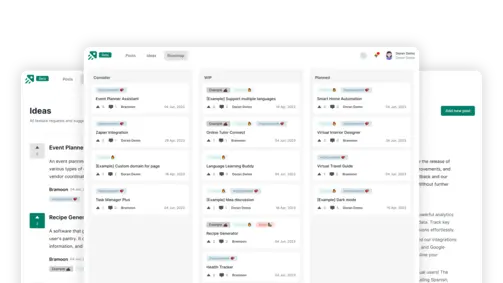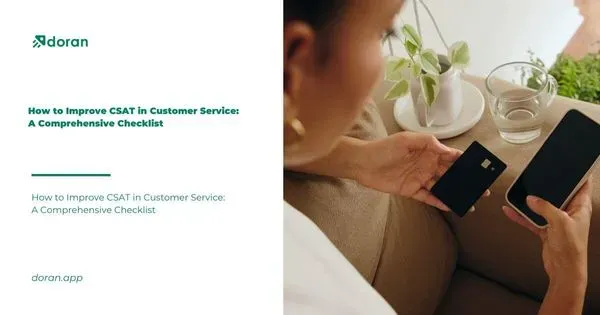NPS Survey Questions: Building Effective Customer Feedback
Create changelog and product roadmap for your product
Explore nowTable of contents 8 min
Crafting impactful NPS (Net Promoter Score) survey questions is the cornerstone of gauging customer loyalty and advocacy. Well-designed NPS survey questions enable businesses to measure customer satisfaction and identify promoters, passives, and detractors effectively. Understanding the art of formulating compelling NPS survey questions is fundamental for businesses seeking actionable insights to propel their growth.
Structure of NPS Survey Questionnaire

The Net Promoter Score questionnaire is divided into two sections. In the first section, clients are asked to score your company, product, or service on a scale of 0 to 10. The second question is an open-ended follow-up about the rationale behind the particular score assigned.
As a general rule, they should be shaped keeping in mind the three NPS categories customers fall into: Promoters (loyal customers, your 9 and 10s), Passives (unenthusiastic customers, your 7 and 8s), and Detractors (unhappy customers, rating you in the 0 to 6 range). This is because the open-ended question directly relates to the specific scoring criteria.
The majority of NPS services follow a common format for both the rating and the open-ended questions. They can, however, be altered to meet the demands of your NPS program and your company’s unique circumstances.
Can I Expand the NPS survey with extra NPS Survey Questions?

Compared to traditional lengthy forms, NPS surveys can provide greater clarity and brevity because of their short, simple, and adaptable questions. Because of this, compared to other survey forms, the survey findings indicate noticeably greater response rates, making this a more reliable tool.
Of course, you may modify the default survey design to include optional questions for more insights. With the use of specialized NPS software, you may completely alter your survey and include more open-ended or closed-ended questions (rating, multiple choice, nominal).
But be careful! It’s not always the case that more questions equal more value. Customers should not be bombarded with questions, particularly in the beginning. Select the most significant ones that will provide the precise information you are looking for.
Find out more: 7 Effective Customer Feedback Strategies for SaaS Growth
What to Include in your NPS Survey Questions

Consider why you are reaching out in the first place before packing your template with too many questions. To ensure that you select the question that will provide you with the most useful feedback from your customers, make sure your NPS survey questions have a well defined aim.
When creating a survey, consider the following points:
-
Specific customer segment
-
Touchpoint in the customer journey
-
Event that triggers
-
Behavior over time
-
Pain points of the customer or that one thing that might turn them into devoted devotees
-
Survey channel
The key to a successful NPS survey question is straightforward: get to know your audience very well so that you can customize their experience and offer value.
Let’s go right to the point and discover the top NPS survey templates that will work well in a variety of settings and greatly assist your own marketing efforts.
Ask feedback from customers for your business
It is a good idea to utilize the default version of the survey question if you are new to using Net Promoter Score surveys.
“On a scale of 0 to 10, how likely are you to recommend our business to a friend or colleague?” is the standard question used in NPS surveys questions.
Based on their answers, respondents were classified into three groups:
-
Promoter (score 9-10): Loyal customers, likely to recommend.
-
Passive (score 7-8): Customers are satisfied but not enthusiastic.
-
Detractors (score 0-6): Unhappy customers can spread negative feedback.
The purpose of this question was to find out how satisfied your clients are with your business. The advantages of posing this specific query are substantial. On the one hand, it gives your customers a voice and lays the groundwork for future discussions with you. Your first NPS survey is the ideal icebreaker in this regard. However, the responses you receive to this question give you a consistent picture of your business and shed light on problems that may not even be known to you in other departments.
This question is useful for tracking the effectiveness of a specific marketing campaign, measuring consumer loyalty, and transferring the gathered data into a long-term growth strategy if you work as a marketing or growth manager.
Read more: Different Types of Customer Feedback & Tips to Collect Them
Change the “company” for a product or service
The traditional NPS survey questions are brief, straightforward, and simple to comprehend. It typically yields the kinds of numerical feedback from customers that companies seek.
It isn’t as specific as it could be in spite of this. Replace “company” with the name of the product, brand, or service if you’re seeking for comments on that specific item rather than the company itself.
This modifies the question slightly, but it will have a significant impact on the outcome: “How likely are you to recommend (product name) to a friend or colleague?”
A replacement like this is excellent for directing the company’s feedback toward the particular product you recently enhanced, released, or promoted. Product managers, in particular, will find the obtained information to be of great use as they seek to refine the product.
Additionally, you’ll discover which features are outdated and must be deleted, which ones require enhancement, and which features are the most notable so that they can be given top priority in the upcoming product update. Additionally, you will gain a true insight of how your customers feel about your product, which will provide you greater confidence when making important decisions. In summary, soliciting user feedback on your product is a beneficial approach for effective product creation.
Get feedback from customers on a particular experience
In NPS survey questions, the language performs most of the work. The conventional wording can be readily modified to achieve a completely different objective. You’ll be shocked at how simple it is to add extra context and focus it on a single customer experience.
The basic NPS survey questions can be modified to include the following options: “considering your recent experience,” “following your (type of) experience,” or “based on your latest interaction with.” These options allow you to measure the likelihood of recommendation immediately following a user’s interaction with your customer support team or purchase. Examine the following examples:
“How likely are you to recommend (company/product name) to a friend or colleague after using the most recent feature updates?”
“How likely are you to recommend (company/product name) to your friend or colleague, given your (recent) purchase experience?”
“Given your experience with our support team, how likely are you to recommend (company/product name) to a friend or colleague?”
The inquiry will draw attention to any problems that require quick resolution in order to raise customer satisfaction and attract more satisfied clients. Asking yourself these kinds of questions will be quite beneficial for evaluating and enhancing both the quality of the customer support experience and your business operations.
Open-ended questions
The typical open-ended question in NPS survey questions is, “What is the primary reason for your score?” However, we’ve found that if a consumer has questions about the score they just submitted, they are more inclined to send us further text feedback.
You can customize the open-ended inquiry using different NPS services according to the respondent’s score. Check out the following open-ended NPS survey questions examples as substitutes for the usual question.
“What aspects of your interaction with us were lacking or unsatisfactory?”
This is an excellent illustration of encouraging customers to talk about the features of your product or service that they find disagreeable. You may increase the likelihood that clients will provide constructive criticism to your company by asking them to do so.
Many are reluctant to offer unfavorable criticism. This question frames the inquiry as a means of assisting you in bettering your service and lets them know that it’s acceptable to identify any problems they may have had while using your product.
“How can your experience be improved by us?”
If someone has given you a passive rating, you may use this follow-up inquiry to gather actionable recommendations on how to improve your product or service.
You can find out exactly what has to be done to correct mistakes and restart your product or service by using Detractors. Using the data that your consumers have provided, you will be able to rank problems and areas for improvement.
In conclusion, the precision and relevance of NPS survey questions play a pivotal role in eliciting valuable feedback from customers. Employing strategic NPS survey questionnaires, analyzing responses, and taking decisive actions based on insights garnered can empower businesses to strengthen relationships with promoters, address concerns of detractors, and ultimately enhance overall customer loyalty.
What to not miss out on our blog
Gain insightful knowledge and invaluable experiences from dedicated experts.

CRM System Explained: Benefits, Types, and How It Works
Discover everything about CRM system. Learn the benefits and how a CRM system works to improve customer relationships and streamline business operations.

Are you ready? Start your free trial today.
Enhance communication, keep track of the progress, understand customers' insight and more by taking your first trial on Doran.
Sign up for free

